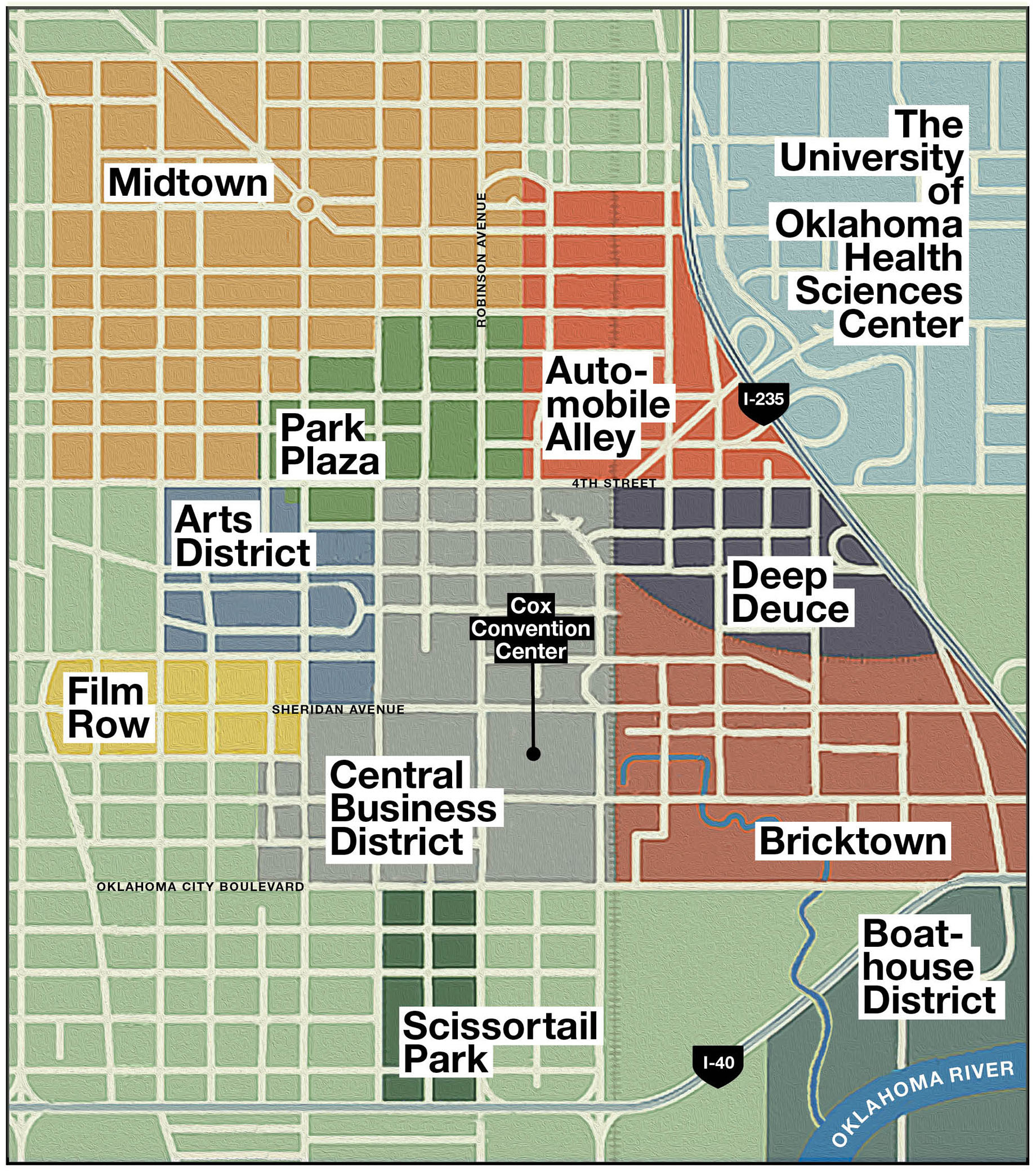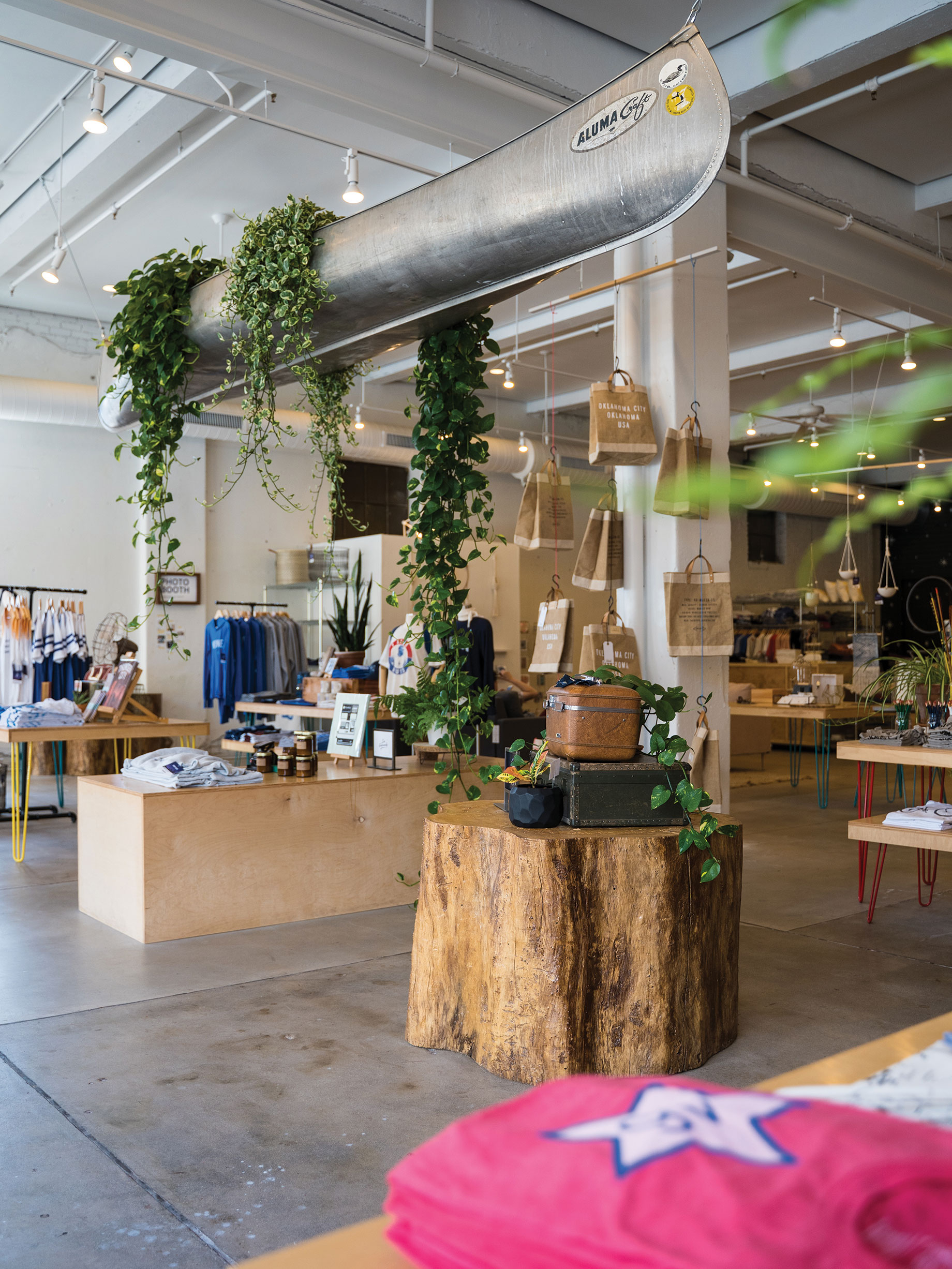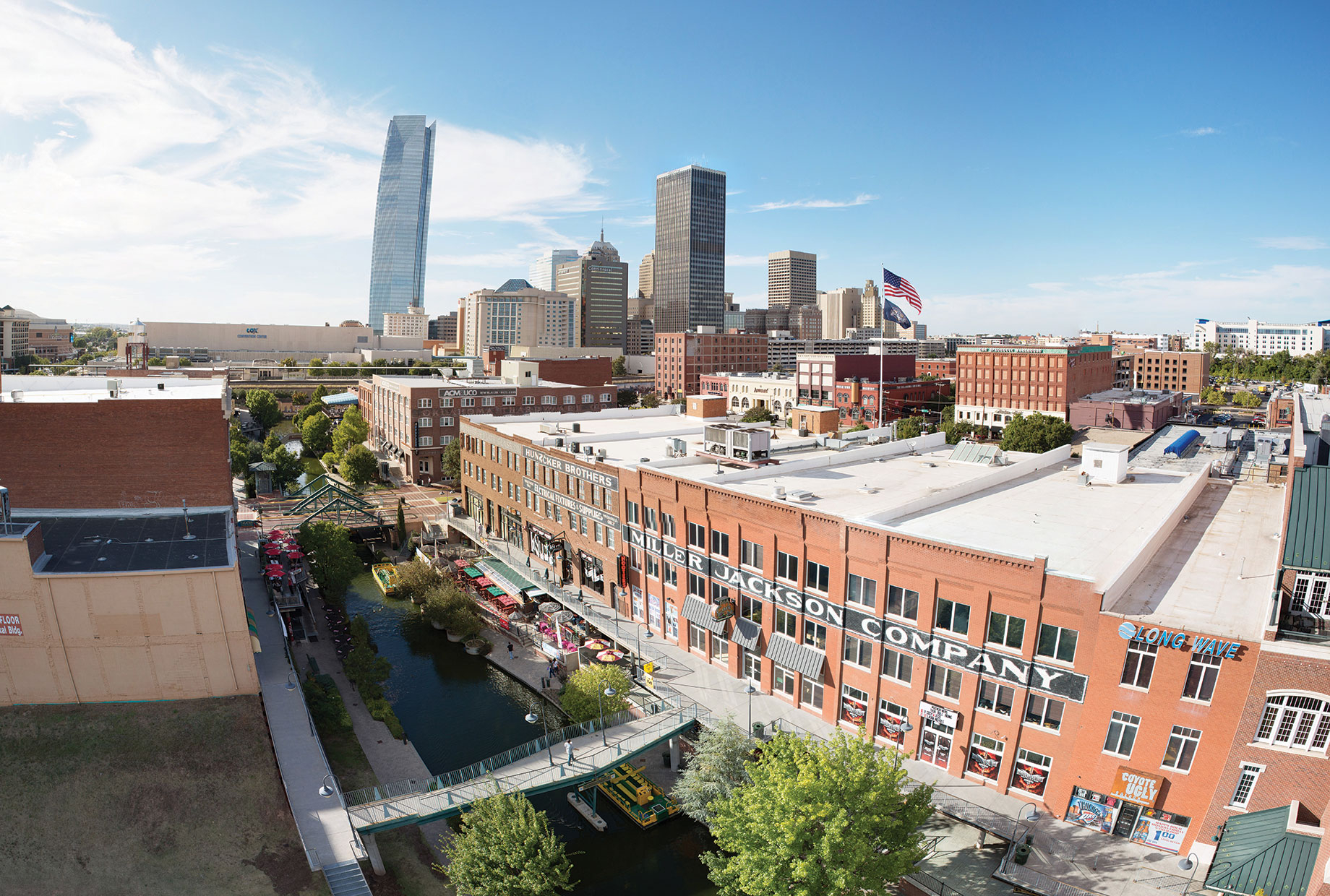Downtown Oklahoma City has cultivated an assortment of local restaurants, breweries, entertainment concepts and retailers. With some 9,300 residents in the urban core, a new convention center nearing completion, and a sports stadium and some apartments and hotels in the pipeline before COVID-19 hit, locals were saying that their downtown was on the radar of national retail brands.
Story continues below

“You’re starting to see a lot more national retailers look this way because of our population growth,” Tammy Fate, who heads retail development and recruitment at the Greater Oklahoma City Chamber, said before the pandemic. “Restaurants are looking [at] downtown more closely, and we have national tenants looking at the core.” The metropolitan area population is approaching 1.5 million, she said. In the business improvement district that generally defines the downtown submarket, the daytime population of residents, workers and students was exceeding 90,000.
Few retailers from outside the region have shown interest so far. There are exceptions, such as Bass Pro Shops and Harkins Theatres, but most of the roughly 160 downtown retailers have been local boutiques. Among these are the Plenty Mercantile gift store and events center, and T-shirt store Shop Good, both located on Automobile Alley, a neighborhood of former automotive dealerships.

Locals like Shop Good, in Automobile Alley, represent the majority of retailers in Oklahoma City
Eateries, too, have been typically local, such as Parlor, a food hall that opened on Automobile Alley last fall. The Collective food hall opened at about that same time, in the Bricktown entertainment area. Bricktown boasts the Chickasaw Bricktown Ballpark, home to the Oklahoma City Dodgers baseball team. The newer Boathouse District extends from Bricktown to the Oklahoma River and offers a white-water rafting center funded through the MAPS 3 (Metropolitan Area Projects) plan and its 1 cent sales tax, collected from April 2010 through December 2017 (see "25 years of public projects" below). The Chesapeake Finish Line Tower in the Boathouse District is pictured at top.

Bricktown Canal looks toward Cox Convention Center here. At the other end, it flows into the Oklahoma River
Retail shops and roughly 60 restaurants are sprinkled around the downtown. Nonesuch, which Bon Appétit ranked America’s best new restaurant of 2018, is in Midtown. Ruth’s Chris Steak House was slated to open this year at First National Center, the redevelopment of the iconic former First National Bank building, in the city center.
The first phase of Scissortail Park opened last year on the downtown’s southern edge, between the old Interstate 40 (now Oklahoma City Boulevard) and the highway’s new alignment about half a mile to the south. MAPS 3 is funding the 70-acre park, as well as a convention center set to open this year on the park’s eastern side, plus a soccer stadium for which the location has yet to be determined.
These and other public projects continue to spark retail and restaurant development, according to George Williams, a retail investment broker with Price Edwards & Co. “Five years from now — if people haven’t been to our city in a while — it’s going to be unrecognizable,” Williams said before COVID-19.
What’s been holding things up
The lack of grocery and convenience stores and drugstores in the business improvement district has impeded residential growth, said Stuart Graham, a CBRE senior vice president. Graham contends that the area needs more residents and activity to help bring in mainstream retailers. “Our evening population hasn’t reached a tipping point for national retailers,” he said. Limited retail density is another challenge, he noted. “Retail is spreading out; people are trying to figure out where the retail is going to congregate, and that large anchor tenant hasn’t come to create synergy.”
Highway infrastructure, one of the city’s strong points, has been a double-edged sword for urbanization, Graham said. Suburban retail centers are only a 20-minute drive away, so retailers want to see stronger demand before committing to locations downtown. But those attitudes may be changing, observed Graham. “You’re beginning to see some national retailers talk about downtown, including grocery concepts,” he said. “A couple of grocery stores have looked downtown in the last three years but are still looking for surface parking and the right position to reach the downtown population.”
Several neighborhoods and mixed-use projects are taking shape near downtown. One that could accommodate a full-scale grocery store and more is a former cotton mill near Bricktown. Oklahoma City–based Sooner Investment has been marketing the 50-acre site and developing a master plan with the owner, Producers Cooperative Oil Mill. Chris Challis, a principal at Sooner Investment, said the uses are still being worked out with city officials but that the parcel has drawn interest from major retailers and third-party buyers. “We envision a component of the project to involve retail and restaurants in an urban, pedestrian streetscape, possibly supported by larger retail anchors,” Challis said. “That would be fashion, maybe soft goods and, possibly, grocery.”
Challis attributed commercial and residential growth in the downtown to a long line of public-improvement programs. “We are reaping the benefits of 20-plus years of the city of Oklahoma City investing its time and resources in its downtown,” he said. “There are enough residents now and on the horizon for national groups to listen to us.”

25 years of public projects
Oklahoma City voters approved the first MAPS (Metropolitan Area Projects) program in 1993, creating a 1 cent sales tax that funded development of the Chickasaw Bricktown Ballpark, Chesapeake Energy Arena, Civic Center Music Hall, Cox Convention Center and the Ronald J. Norick Downtown Library, as well as the creation of the mile-long Bricktown Canal and related streetscaping. MAPS also produced the now-discontinued trolley system. It also sparked improvements to State Fair Park, as well as the restructuring of seven miles of the North Canadian River into a network of lakes now called the Oklahoma River. The initiative raised some $309 million directly, plus about $54 million in interest.
The second MAPS effort, the $700 million MAPS for Kids launched in 2001 to fund public school improvements. In 2009, the voters approved MAPS 3, which undertook a swath of projects, many of them fortifying the downtown with new infrastructure. Construction began in 2012 and is expected to conclude in 2022. MAPS 3 surpassed its original target of $777 million, raising upward of $800 million. Its projects include the Bennett Event Center at State Fair Park, the Riversport Rapids white-water sports center, the Oklahoma City Convention Center, Scissortail Park, several health-and-wellness centers for seniors and some walkway improvements. MAPS 3’s Oklahoma City Streetcar system transported its 500,000th rider this year.
The voters authorized another 1 cent sales tax along with a roster of MAPS 4 projects last December. This round had been expected to raise $978 million over eight years, concentrated on social services, though COVID-19 may impact tax revenue. Among the projects planned would be parks, youth centers, additional senior wellness centers, mental health and addiction services, a family justice center, affordable housing, arena improvements, an animal shelter, replacement of Jim Norick Arena with a new fairgrounds coliseum, a criminal-justice facility for low-level offenders, a civil-rights center, a multipurpose stadium and an innovation district, including a center for fostering business development and entrepreneurship.
By Matt Hudgins
Contributor, Commerce + Communities Today


